Lake Kerkini is one of northern Greece’s favorite destinations for nature lovers and photographers. Discover the history of this place.
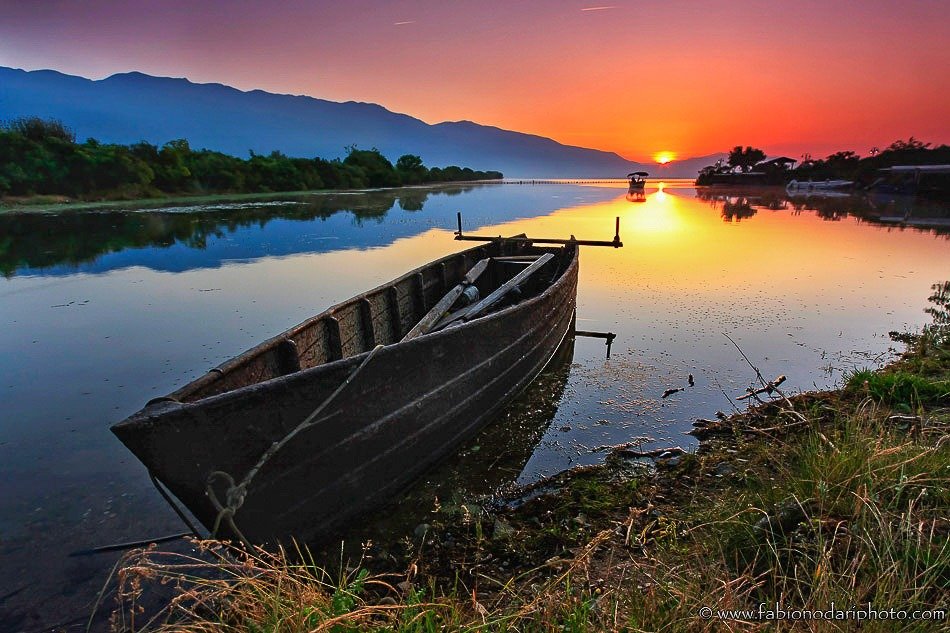
What amazes a visitor who arrives for the first time on the shores of Lake Kerkini is the incredible number of bird species, at least 300, all living in a relatively small space. It’s also nice to see how men and animals have lived together in peace for a long time.
Until 1928, Lake Kerkini was not permanent. That year, the Greek government commissioned the American Company John Monks-Ulen & Co. a project for developing the Serres Valley. In 1932, work began on the project, completed in 1982.
Today, the lake’s water level can vary greatly, so its size can go from a minimum of 55 square kilometers to a maximum of 85 square kilometers. The lake is at most 10 Mt deep, so not that much.
How to get to Kerkini
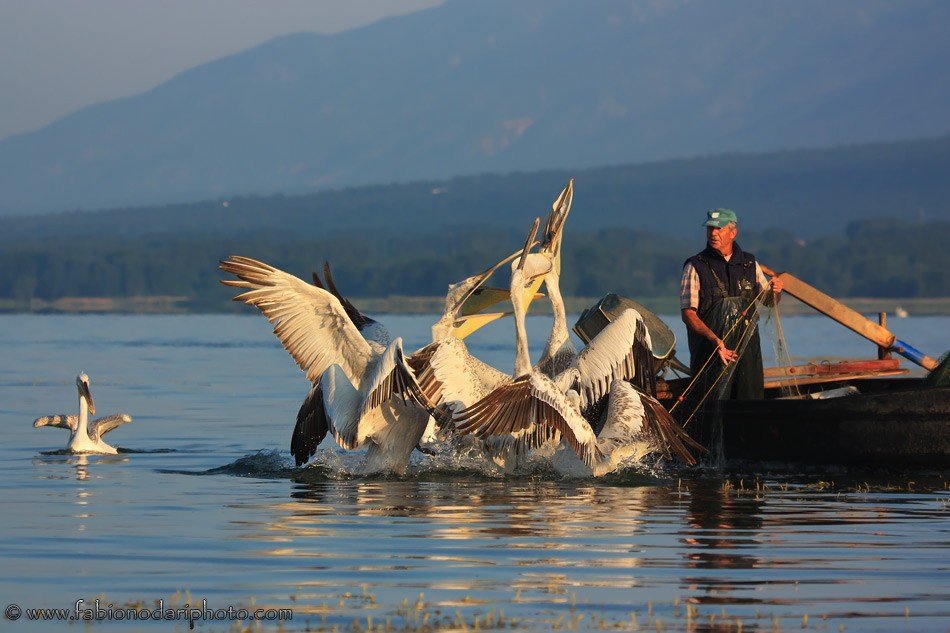
To get to Kerkini, you’ll need to rent a car. You’ll probably fly to the Thessaloniki airport, and from there you can drive to Kerkini.
Once in Kerkini, the best way to visit the lake is by boat; here, you’ll have a couple of options.
- The first option is to join a tour with other people. This is an excellent option if you are traveling with your family or friends and only want to spend a few hours immersed in nature. It won’t be expensive, and you can meet some local people, which is always lovely. The tours usually leave around mid-morning or mid-afternoon. However, remember that there are many people, especially on weekends.
- The second option, which is certainly more interesting if you are a photographer, is to rent a private boat and ask a local fisherman to take you around the lake. The cost is slightly higher than the first option, and you have to wake up quite early to take advantage of the good light, but at least you’ll have the whole boat for you.
Where to stay in Kerkini
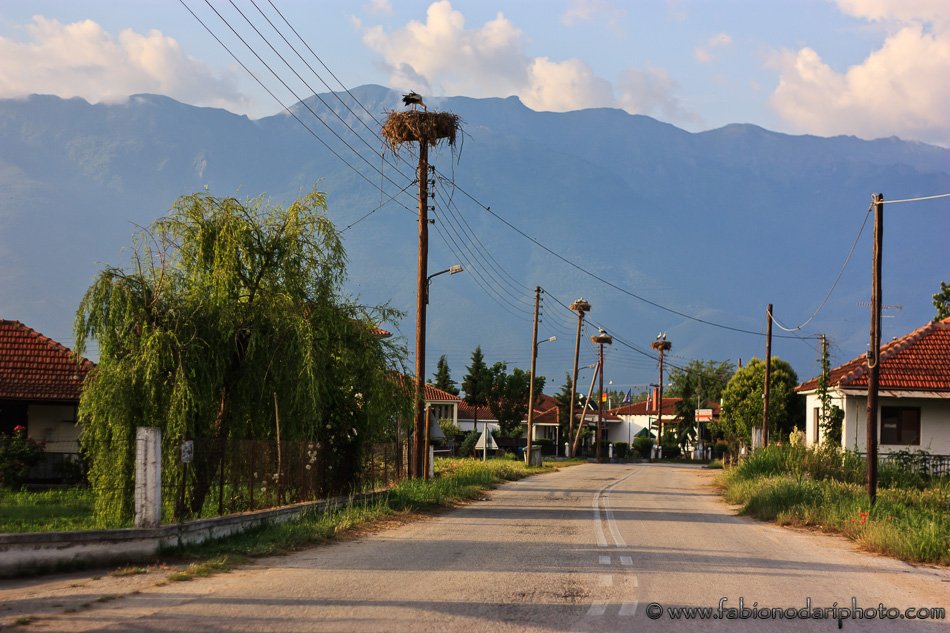
If you want to visit the lake, you can sleep in a B&B in the village of Kerkini. You can find some good deals on Booking.com. Alternatively, check out Trip.com.
If you decide to visit Lake Kerkini, don’t forget to make a short trip to North Macedonia: you will not regret it. Here you can find some tips for visiting this small, off-the-beaten-path country in Eastern Europe. In North Macedonia, you can also find another colony of Dalmatian Pelicans.
What impressed me the most when I got to Kerkini was seeing a long line of White Stork nests along the main road. This proves that there is a special balance between man and nature.
Kerkini and the birds
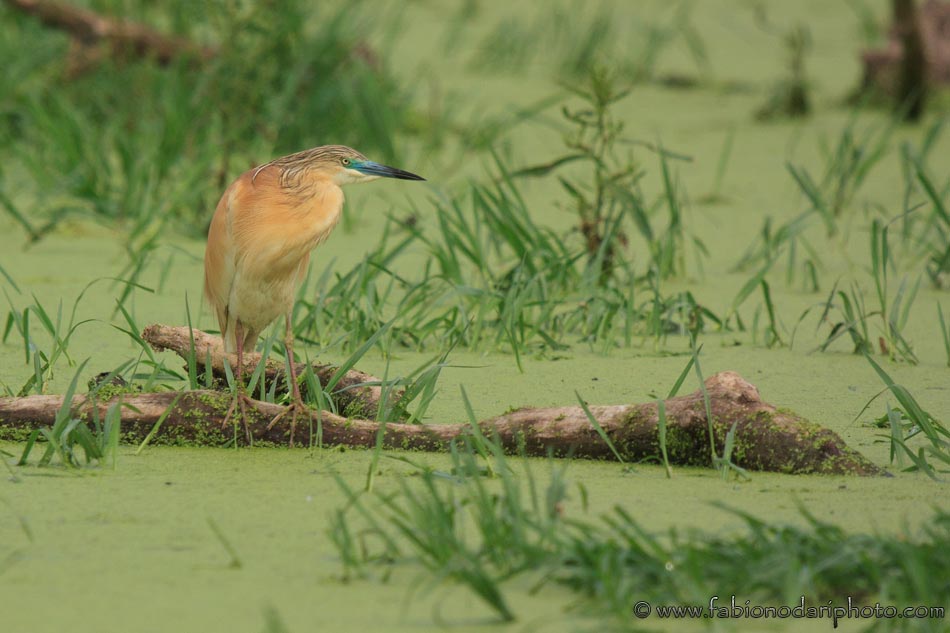
Due to its location in eastern Europe, Lake Kerkini offers a unique bird habitat. It’s one of the best places in Europe for birdwatching; some species are extremely rare.
It’s possible to observe Golden Eagles, Hoopoe, Great crested grebe, Eurasian spoonbill, Black Cormorant (thousands), White and Black Storks, and the Dalmatian Pelican.
There are thousands of Cormorants in the Lake Kerkini area. Their guano is so corrosive that some trees are dead and seem almost spectral.
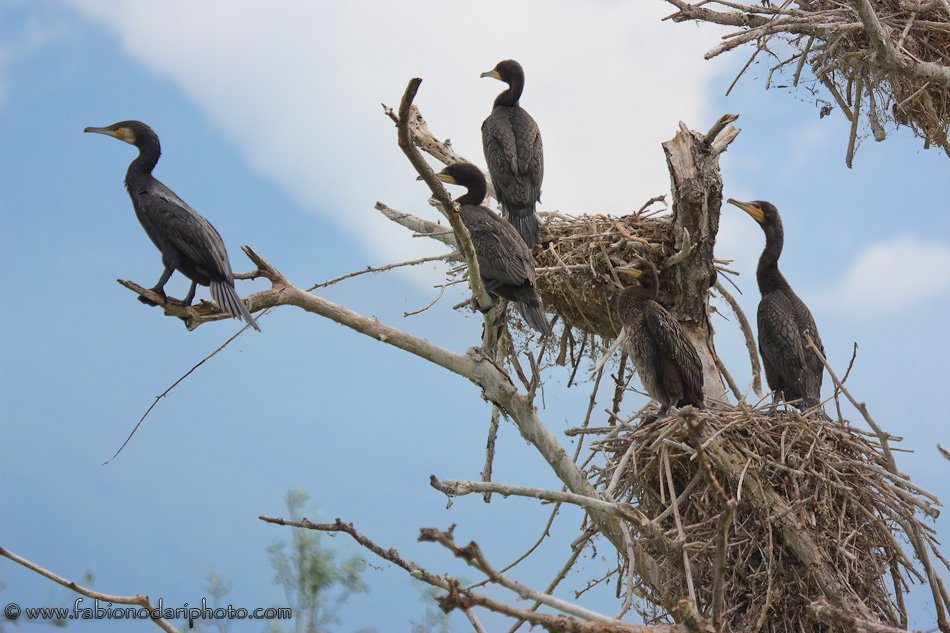

During the days I spent on the shores of Lake Kerkini, I also took several photos of the Great crested grebes on their nests. I didn’t get too close to them to avoid causing problems.
If you can stay for several days in Kerkini, you will surely be able to see more species of birds and mammals and maybe spot some wolves and bison.
I hope to have the opportunity to come back in winter to photograph the pelicans during the mating season while they have the characteristic bright red beak.
The Dalmatian Pelicans (Pelecanus crispus) of Kerkini
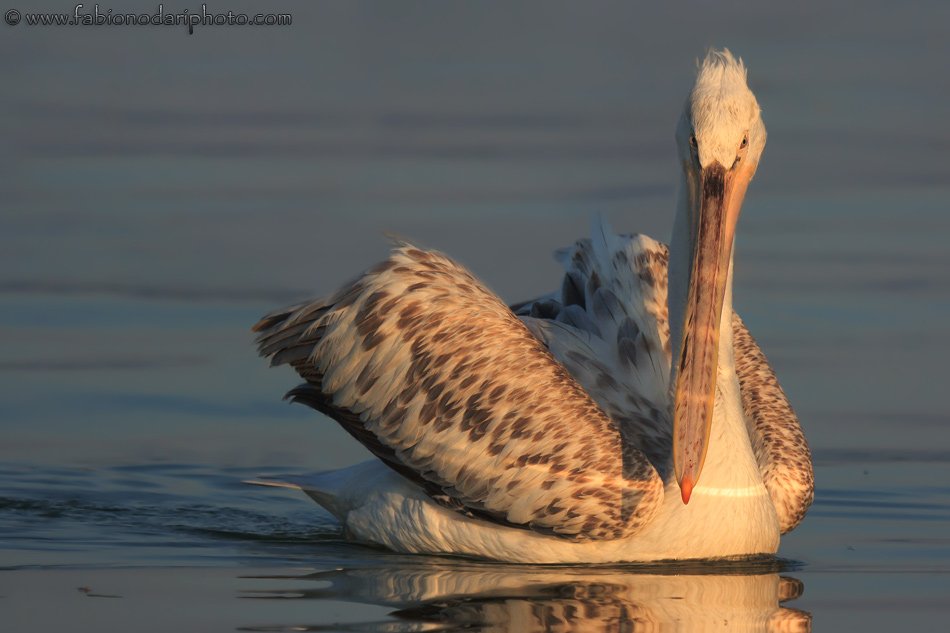
The majority of photographers who visit Kerkini do it to photograph the colony of Dalmatian Pelicans. If you want to know more about them, I highly recommend reading the book “Dalmatians – and Other Pelicans” by Swedish photographer Brutus Östling.
The Pelican is a migrating bird, but the local fishermen feed the pelicans during the winter, so they no longer have any reason to migrate.
From a naturalistic point of view, it is not good when men change the habits of the wildlife, but it must be kept in mind that the Dalmatian Pelicans are now an endangered species, and what the local people have done is helping to preserve the species. A similar situation developed in Yunnan with the Snub-Nosed Monkeys.
Obviously, the topic is much more complicated than this, but I think they did a good job saving the local colony.
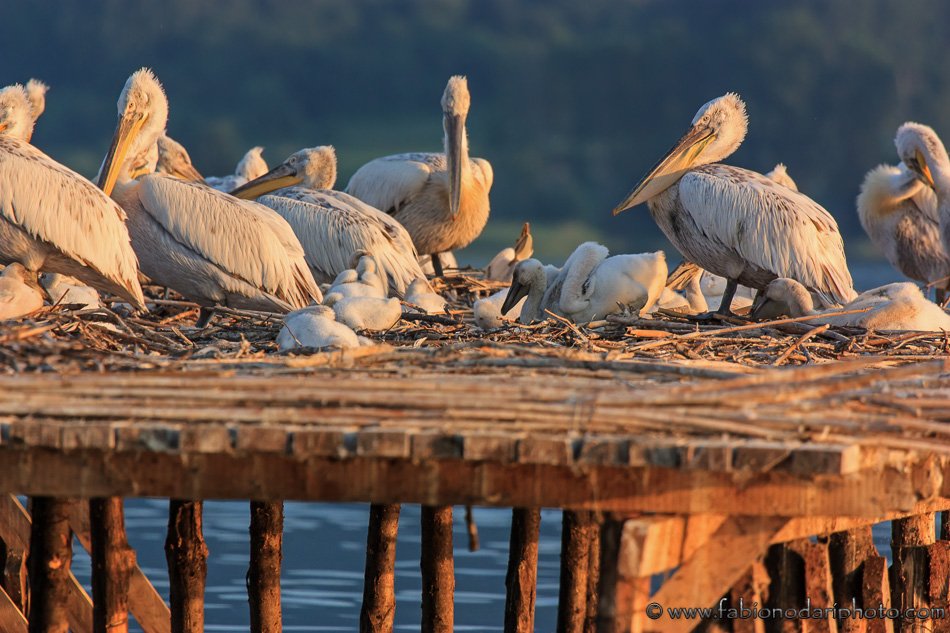
This bird is impressive: with a wingspan of 3 meters and a weight of 13 Kg, it is the largest of the 8 species of Pelicans and one of the heaviest flying birds in the world. To my surprise, it feeds on fish but sometimes also on chicks of other bird species.
In mythology, pelicans are associated with parents who sacrifice their hearts to raise their children. I discovered these legends only once back home, but that doesn’t surprise me. I happened to see a little pelican who had fallen into the water, and, not being able to fly back to the nest, he found shelter on a piece of wood. Instead of abandoning him, his parents took turns feeding him and standing next to him. It’s a beautiful example of parental love.
Unfortunately, today, the lives of these birds are seriously endangered. The nesting sites and the places where they catch the fish are increasingly reduced or damaged by pollution. We can only hope that more and more people understand that habitat loss threatens the Pelicans and us all.
Some final thoughts
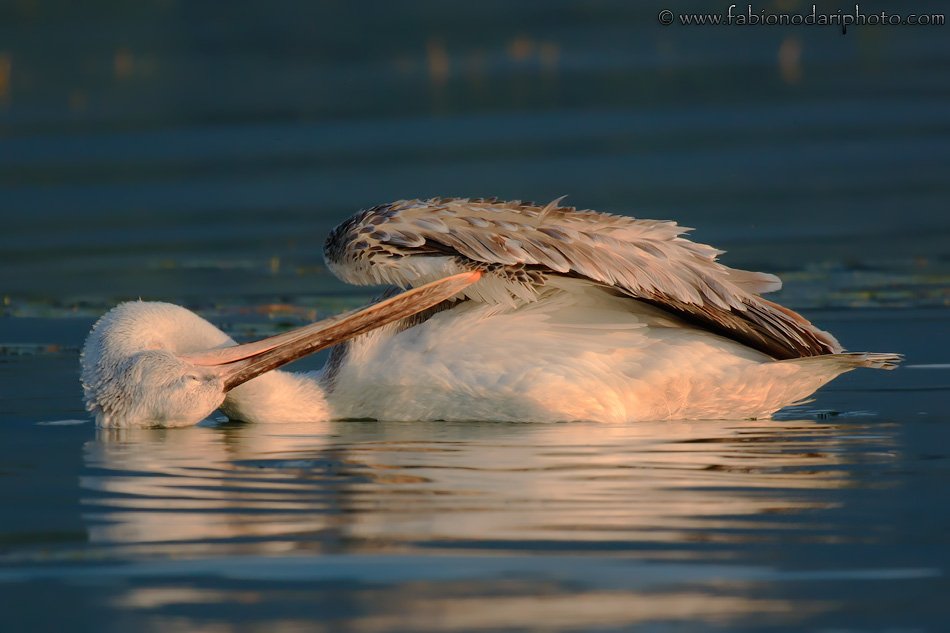
Lake Kerkini is an example of how man and nature don’t necessarily have to compete with each other. Of course, the balance in this place is precarious, so I believe it is good to raise awareness among the people about the dangers that many animals face.
What the local teachers are doing, bringing children to the lake and educating them to respect nature, is a good step in the right direction.
Here are some more pictures of Lake Kerkini. Here is my travel guide to Meteora. If you plan to visit nearby North Macedonia, don’t miss my post about the top things to do in Skopje, the country’s capital.
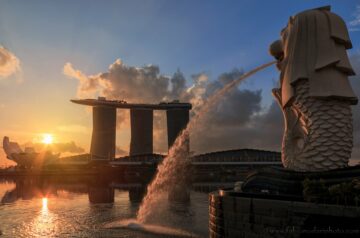
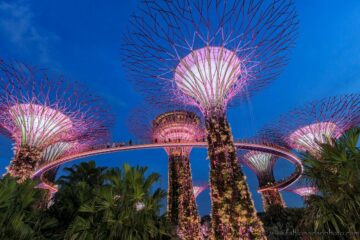
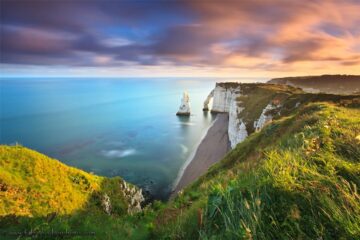
thank you for this information i will travel to this lake in februari to stay 3 nights and cant wait!
Hope you’ll have a great time 🙂